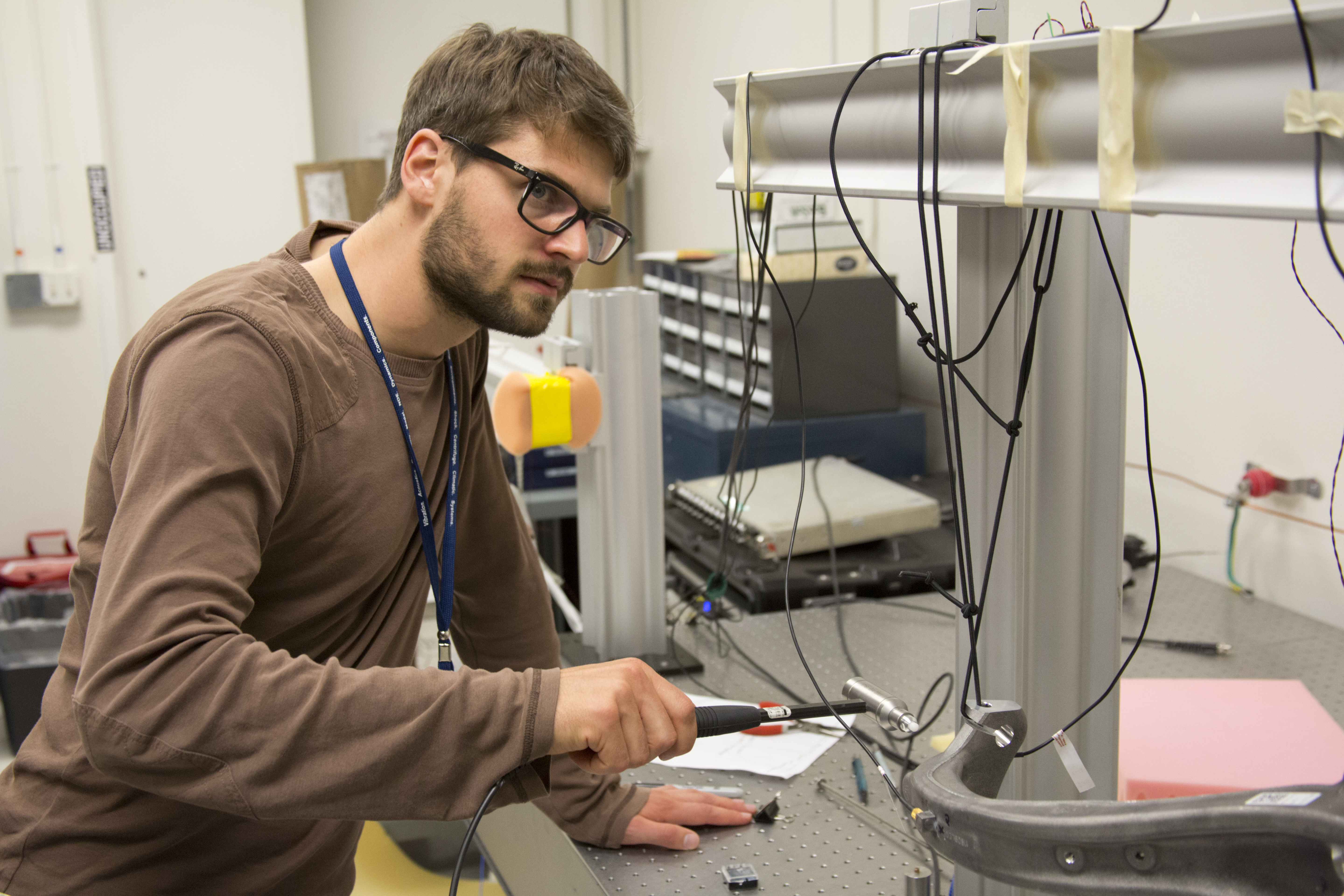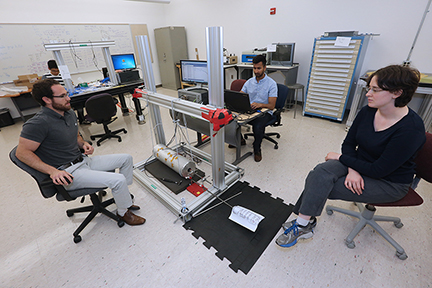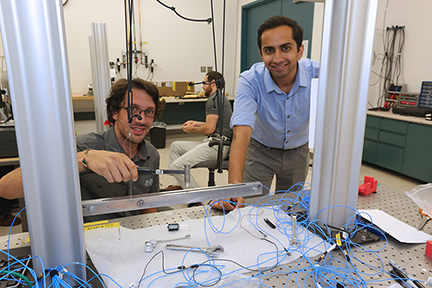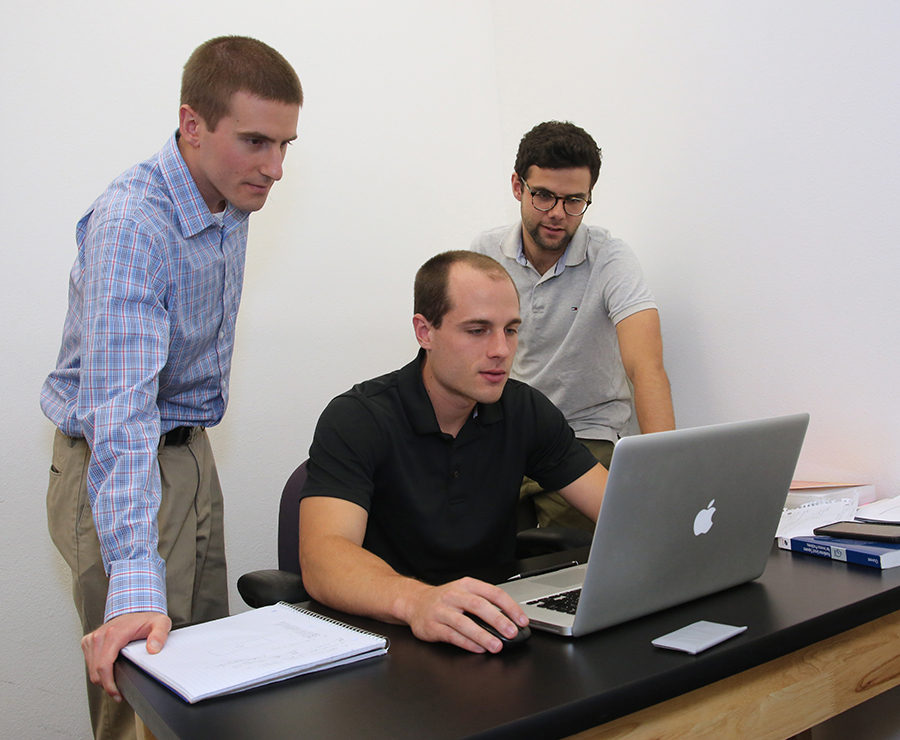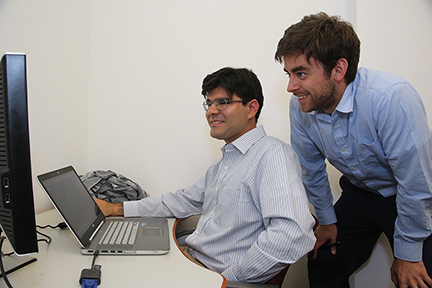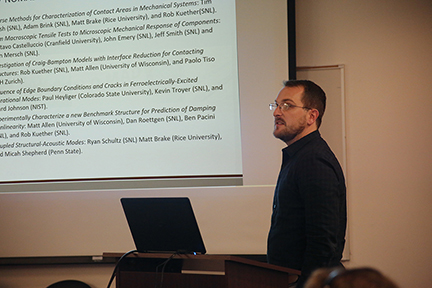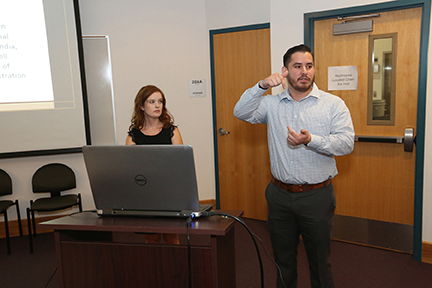Overview
What You Gain
- Meaningful work in your area of interest to improve understanding of cutting-edge research and development
- Collaborate with other researchers and receive mentorship from the professional community
- Short-term commitment without conflicting with existing fellowships or assistantships
- Verification and Convergence of the Method of Harmonic Balance within Sierra/SD FEA Code – View Presentation
- Measurement and Visualization of Nonlinear Vibration Response Using Neuromorphic Event – Based Sensing – View Presentation
- Bolted Joints Friction Modeling Under Shock – View Presentation
- Electrical Chatter and Modal Response of Pin-Receptacle Contact in Oil – View Presentation
- Quantifying the Effect of Non-Physical Parameters on the Nonlinear Dynamics of an Electromechanical Ratcheting Mechanism – View Presentation
- Investigating the Microstructure and Properties Relationship of a Ta-alloy – View Presentation
- Electrical Chatter and Modal Response of Pin-Receptacle Contacts in Oil – View Presentation
- Sensor Placement Optimization for Expansion of Mixed-Domain Dynamic Response – View Presentation
- A Distortion Compensation for Additive Manufacturing – View Presentation
- Ductile Failure Prediction in Additively Manufactured Metals via 3D Characterization – View Presentation
- Quantitative Analysis of Pulse-Shape Modeling for Shock Tests – View Presentation
- Extracting the Salient Features of a Multi-Harmonic Time Response with Closely Spaced Modes – View Presentation
- Analytical Modeling of Piezoelectric Stack Actuators for Vibrafuge Applications – View Presentation
- A Distortion Compensation Workflow Accounting for the Effects of Post-Processing in Metal Additive Manufacturing – View Presentation
- Dynamic Tailoring of Interlocking Metasurfaces (ILMs) – View Presentation
- Parameterized Friction Modeling with Optimized User Constructs – View Presentation
- Fielding Advance Diagnostics to Understand Joint Dynamics – View Presentation
- Electrical Chatter and Modal Response of Pin-Receptacle Contacts – View Presentation
- Obtaining Fixed-Base Nonlinear Modal Models from Free Boundary Testing – View Presentation
- Optimizing Test Setup Parameters for Force Appropriation Testing – View Presentation
- Layered Plate Damping – View Presentation
- Pressure Vessel Enclosure Penetration Energy Prediction – View Presentation
- Model Validation of a Modular Foam Encapsulated Electronics Assembly with Controlled Preloads via Additively Manufactured Silicone Lattices – View Presentation
- Distortion Compensation for Metal Additive Manufacturing – View Presentation
- Nonlinear Characterization of a Joint Exhibiting a Reduction in Damping at High Energy – View Presentation
- Empirical Model of Puncture Energy for Metals – View Presentation
- Mapping from Low Fidelity to High Fidelity Analysis for Failure Quantities of Interest – View Presentation
- Modeling Rate Dependent Interface Separation with Cohesive Zone Models and Bulk Viscoelasticity – View Presentation
- Investigating the Potential of Electrical Connection Chatter Induced by Structural Dynamics – View Presentation
- Nonlinear Transient Response of Electromechanical Assemblies – View Presentation
- Nonlinear Analysis of Mechanical Joints in Finger-Like Mechanism-Based Morphing Wing Devices – View Presentation
- Neural Network Informed Uncertainty Quantification for Structural Dynamics Reduced-Order Models – View Presentation
- Nonlinear Normal Mode Force Appropriation Techniques to Investigate Wing-Pylon Assembly – View Presentation
- Correlation of Reduced-Order Model of Threaded Fastener – View Presentation
- Dynamics of Bolt Loosening – View presentation.
- Investigation of Electrical Contact Chatter in Pin-Receptacle Contacts – View presentation.
- Force Reconstruction at Mechanical Interfaces – View presentation.
- Modeling and Experimental Validation of a Pylon Subassembly Mockup with Multiple Nonlinearities – View presentation.
- Development of Reactive Potentials for Molecular Dynamics Simulations – View presentation.
- Indentation of Porous Materials: Factors Affecting the Indentation Results and a Comparison to Bulk Material Testing – View presentation.
- Validation of Puncture Simulations with Various Probe Geometries – View presentation.
- Constructing Optimal Surrogate Models for Bolted Fasteners in Multiaxial Loading – View Presentation
- Influences of Modal Coupling on Nonlinear Modal Models – View Presentation
- A Priori Methods to Assess the Strength of Nonlinearities for Design Applications – View Presentation
- Fatigue Behavior of Fe-Co-2V using Experimental, Computational, and Analytical Techniques – View Presentation
- Material Failure Model and Properties for Puncture Simulations – View Presentation
- Predictive Structural Dynamics Modeling of Bolted Interfaces – View Presentation
- Inverse Methods for Characterization of Contact Areas in Mechanical Systems – View presentation.
- From Macroscopic Tensile Tests to Microscopic Mechanical Response of Components – View presentation.
- Investigation of Craig-Bampton Models with Interface Reduction for Contacting Structures – View presentation.
- Influence of Edge Boundary Conditions and Cracks in Ferroelectrically-Excited Vibrational Modes – View presentation.
- Experimentally Characterize a new Benchmark Structure for Prediction of Damping Nonlinearity – View presentation.
- Coupled Structural Acoustic Modes – View presentation.
Program Details
| Location | University of New Mexico (Albuquerque, NM) |
| When Offered | Summer (8 week duration) |
| Level | Undergrad (B.S.) Graduate (MS and PhD) |
| Discipline | Aerospace Applied Mathemaics Civil Engineering Engineering Mechanics Materials Mechanical Engineering |
| Desired Skills | Research in nonlinear mechanics and dynamics Lab experience Finite element modeling Signal processing Optimization Matlab and/or Python |
